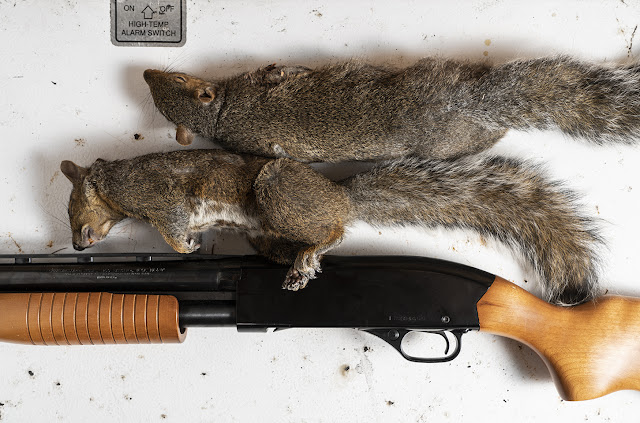Chicken of the Tree
Another major difference is that city dwelling squirrels (at least in New York) do not fear humans. This might lead one to believe that in the forest, these tree-ninjas would be easy to hunt. The polar opposite is true. Rural dwelling squirrels are incredibly weary of humans, as we are just another creature in a long line of beings that want to eat them. They are difficult to hunt. They take just as much stealth and skill to hunt as do deer. While their sheer numbers in many places increase your odds of a successful harvest should you pursue them, they are a far cry from a guarantee. It takes real skill to kill a smart squirrel in the woods. A meal of squirrel is always well-earned.
Something else I'd like to also point out is that one of the most prominent figures of 20th Century American Cuisine, James Beard, was a huge fan of eating squirrels. Every cookbook he ever authored included squirrel recipes. To win a James Beard award is today one of the highest honors in the world of culinary arts. If James Beard thought so highly of squirrels, then they simply must be good to eat. End of story.
I've only cooked squirrel one way, by braising them in apple cider for several hours with carrot, onion, and tarragon according to a recipe by chef Ian Knauer that I came across in Bon Appetit. From everything I've read about cooking squirrel, low and slow is the way to cook them, as the meat can be incredibly tough with a hot and fast cooking method. But when braised, the meat becomes fall-off-the-bone tender, and chef Knauer's recipe makes for an incredibly flavorful dish that highlights the flavors of Fall, the season when squirrels can be hunted in most of North America.
While bear hunting last weekend in New Hampshire with my dad, I took advantage of the afternoon lull to go after some squirrels with my shotgun, Rosie. I was able to harvest two for us for dinner. They were delicious. It was the first of hopefully many meals of squirrel for this season. If you've never tried squirrel, I cannot recommend it enough. I'm planning on pursuing them as often as possible this season, so chances are good that at any given time I'll have a few in my freezer, and if you'd like to try it, give me a shout. You bring the wine, I'll braise the squirrels.



Comments
Post a Comment